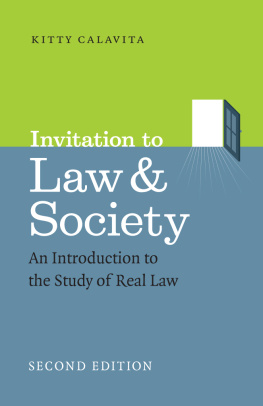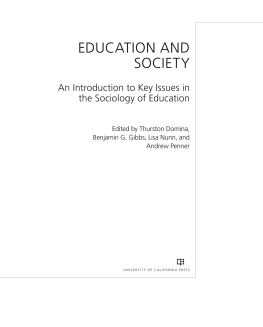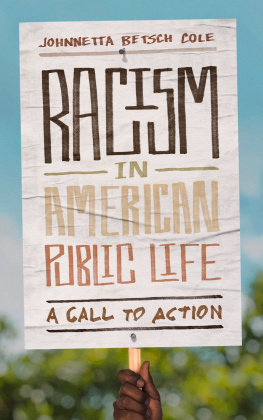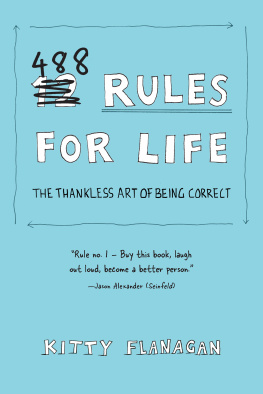Invitation to Law & Society
The Chicago Series in Law and Society
Edited by John M. Conley and Lynn Mather
ALSO IN THE SERIES:
Pulled Over: How Police Stops Define Race and Citizenship
by Charles R. Epp, Steven Maynard-Moody, and Donald P. Haider-Markel
The Three and a Half Minute Transaction: Boilerplate and the Limits of Contract Design
by Mitu Gulati and Robert E. Scott
This Is Not Civil Rights: Discovering Rights Talks in 1939 America
by George I. Lovell
Failing Law Schools
by Brian Z. Tamanaha
Everyday Law on the Street: City Governance in an Age of Diversity
by Mariana Valverde
Lawyers in Practice: Ethical Decision Making in Context
edited by Leslie C. Levin and Lynn Mather
Collateral Knowledge: Legal Reasoning in the Global Financial Markets
by Annelise Riles
Specializing the Courts
by Lawrence Baum
Asian Legal Revivals: Lawyer-Compradors and Colonial Strategies in the Reshaping of Asian States
by Yves Dezalay and Bryant G. Garth
The Language of Statutes: Laws and Their Interpretation
by Lawrence M. Solan
Belonging in an Adopted World
by Barbara Yngvesson
Making Rights Real: Activists, Bureaucrats, and the Creation of the Legalistic State
by Charles R. Epp
Additional series titles follow index
Invitation to Law & Society
An Introduction to the Study of Real Law
SECOND EDITION
KITTY CALAVITA
The University of Chicago Press
Chicago and London
KITTY CALAVITA is chancellors professor emerita in the Departments of Criminology, Law and Society, and Sociology at the University of California, Irvine. She is the author, most recently, of Appealing to Justice: Prisoner Grievances, Rights, and Carceral Logic.
The University of Chicago Press, Chicago 60637
The University of Chicago Press, Ltd., London
2010, 2016 by The University of Chicago
All rights reserved. Published 2016.
Printed in the United States of America
25 24 23 22 21 20 19 18 17 16 1 2 3 4 5
ISBN -13: 978-0-226-29644-9 (cloth)
ISBN -13: 978-0-226-29658-6 (paper)
ISBN -13: 978-0-226-29661-6 (e-book)
DOI : 10.7208/chicago/9780226296616.001.0001
Library of Congress Cataloging-in-Publication Data
Calavita, Kitty, author.
Invitation to law & society : an introduction to the study of real law / Kitty Calavita. Second edition.
pages cm (The Chicago series in law and society)
ISBN 978-0-226-29644-9 (cloth : alk. paper) ISBN 978-0-226-29658-6 (pbk. : alk. paper) ISBN 978-0-226-29661-6 (ebook) 1. Sociological jurisprudence. 2. LawSocial aspectsUnited States. I. Title. II. Title: Invitation to law and society. III. Series: Chicago series in law and society.
K 370.c35 2016
340'.115dc23
2015018041
This paper meets the requirements of ANSI/NISO Z 39.48-1992 (Permanence of Paper).
For Zellie and Luca
Contents
Introduction
Types of Society, Types of Law
Law in the Everyday, Everywhere
The Color of Law
Many Laws, Many Orders
The Talk versus the Walk of Law
Law and Social Justice: Plus a change...
Reflecting on Laws Image: An Inward Turn?
Conclusion
The first edition of this book was published in 2010, just as I retired from full-time teaching and moved to Berkeley, California. Among the many changes this brought, I became directly involved in my local community in ways I never had before. The consequence is that I have met people I never would have encountered, have had experiences unlike any in my academic life, and have sometimes undergone dramatic shifts in my social location.
Among the most powerful of these experiences, in 2012, I became a Court Appointed Special Advocate (CASA) for a young girl, Akira (pseudonym), whotogether with her sisterhad recently been reunited with her birth mother after years in foster care. I figured that being a CASA would draw from my knowledge of law and sociology, and it was consistent with my concerns for social justice and child welfare. What I hadnt figured on was how powerfully the experience would affect me, both intellectually and personally. My CASA assignment has ended, but I remain close to the family and continue to see them regularly. This friendship has exposed me directly to the chaotic life experiences and daily challenges of those who live in poverty, as this mom and her two daughters move from unaffordable apartment to unaffordable apartment, to motels, to SROs, andperiodicallyto the street.
At the same time, I was given the opportunity to teach sociology at San Quentin State Prison through the Prison University Project. This program offers the only in-class, accredited college courses in California prisons, and it provides those who complete the course sequence with a degree equivalent to that of a two-year community college. My three semesters of teaching San Quentin prisoners have been some of the most rewarding teaching I have ever done. Not only are the students excited to learn and hardworking, but they bring unique perspectives because of their life experiences. I will never forget one older African American prisoner who, at our last class, said how much he had enjoyed sociology, especially the concept of social structure and its links to race and class inequality. But he added, When I get out of here, Im going to have to act as if it doesnt apply to me.
These friendships and interactions with people who are in my community, but who are in so many ways socially and physically removed from it, have given me a new and deeper appreciation of how real law works. They have brought me into the machinery of poverty law, housing discrimination, welfare accounting, and traffic warrants, teaching me their Kafkaesque particularities. More broadly, they have viscerally brought home for me the dominant force of law in the lives not just of the prisoners I teach, but also of Akira and her family and millions more like them. In this second edition, I have included illustrations of this profound penetration of law into the lives of the poor, for example in my discussion in chapter 2 of the St. Vincent de Paul Homeless and Caring Court.
I have made a few other changes as well, more directly related to advances in the scholarship. Since I wrote the first edition of this book, the law and society field has continued to expand and diversify. It is more than ever true that diversity and innovation are among our fields great strengths. It would be impossible to capture all the law and society developments over the past five years in this slim volume, and I have not attempted to do so. This book is meant to be not an overview of the field, but rather a sampling of some of the questions posed by law and society scholars, a taste of some of the ways we think about law, and an invitation to join us in conversation. What I have also done in this new edition is update the many illustrations and anecdotes that I use to clarify concepts and theories, so they may more directly resonate with the contemporary reader.
I have added a new chapter tooReflecting on Laws Image: An Inward Turn?in which I introduce the reader to the law and cultural studies movement. Some of the themes discussed there will be familiar, as they make brief appearances throughout the book. Others will be new, some radically so. Many scholars in this movement identify more with the humanities than with social science, and their methods and foci reflect this. Here, I provide you with a few examples of this broad movement and question the suggestion that it represents, as some have argued, a turning away from the kind of political engagement that inspired so many early law and society scholars.









